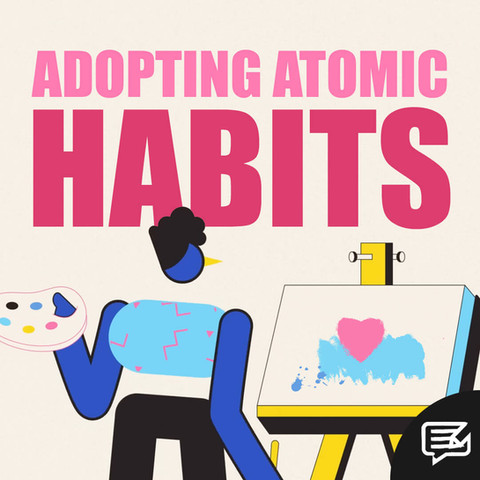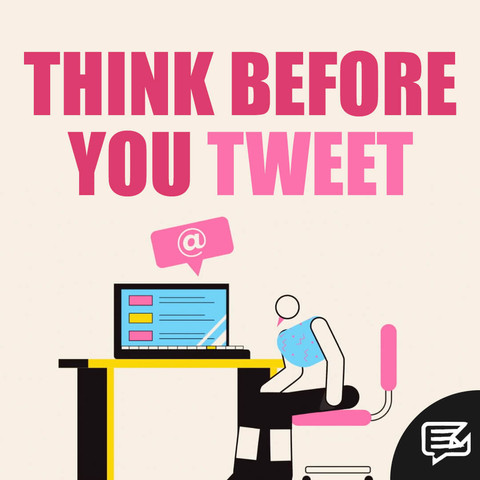
06.11.21
TIKTOK RESUMES
In my day job, I’ve been responsible for hundreds – if not thousands – of hires. I’ve read CV after CV, conducted interview after interview… It can be a long, arduous process but it’s one I take very seriously.
It’s about more than just finding the right person for the job - it’s ensuring it’s the right job for the person. Will they find the work interesting? Will they feel challenged? Will they enjoy it?



These are not questions answered by two sides of A4, but by hearing what makes a person tick, gauging their enthusiasm levels, understanding their motivations… It’s perhaps not surprising, then, that social media giant TikTok chose to trial a new – and highly visual - way for users to apply for jobs over the summer: video resumes.
Back in July, TechCrunch reported:
“A new pilot program from TikTok would inject a little LinkedIn into the youthful video-based social network.
“TikTok announced that, starting today [8th July], it will invite users to submit video resumes to participating companies, including Target, Chipotle, Shopify, Meredith, NASCAR and the WWE. The company encourages applicants to show off their skills in a creative way while tagging the content with the hashtag #TikTokResumes.
“The pilot program is TikTok’s latest effort to streamline the relationship between brands and creators, giving both even more reason to invest time and cash into the platform.”
On the one hand, it’s an exciting opportunity for digitally savvy folk to showcase their skills via the medium of film. On the other, it “opens the doors to discrimination” – an issue addressed by Isabella Simonetti’s article for Bloomberg:
“…while creating a TikTok resume gives Gen Z-ers a novel way to stand out to employers, some lawyers and recruiters say the feature could adversely affect older generations who aren’t as adept at making short-form cellphone videos, those who can’t afford smartphones, and job candidates in communities vulnerable to appearance-based discrimination. Critics also believe that video resumes may become problematic for employers striving to implement more inclusive hiring processes.”
In other words, the process can simultaneously discriminate against those that submit video resumes (i.e. they’re female, too old, too many tattoos, poor dress sense), and those that are unable to (i.e. not au fait with TikTok, do not own a smartphone).
In the UK, recruiters cannot ask candidates about “protected characteristics”. These are: age, gender reassignment, being married or in a civil partnership, being pregnant or on maternity leave, disability, race (including colour, nationality, ethnic or national origin), religion or belief, sex, and sexual orientation.
By sharing a video resume, candidates are revealing more about themselves than recruiters are legally entitled to know, putting them at risk of bias – conscious or otherwise.
That said, I’m sure a shake-up of sorts would be welcome.
Job hunting can be all-consuming. Spending hours – sometimes days - perfecting a personalised cover letter and application form, only to receive a one-line automated response from HR can really hurt. In some cases, even the automated response is too much to hope for.
So, to save time, how about a standardised template for CVs? That’s one way to level the playing field, and let the experience and skill set of candidates speak for themselves. But would that jeopardise the chances of more creative types, who can convey originality or design skills through their bespoke submissions?
How about doing away with the tiresome “cover letter” entirely? It’s as much a drain for hiring managers to read pages and pages of prose, as it is for candidates to write it. For the most part, it serves as repetition of the CV anyway. I’d much rather candidates convey why they believe the role is a good fit for them – and what they can bring to the company – in a single paragraph, and do away with the “Dear Sir / Madam” spiel altogether.
Arguably, TikTok resumes combine both these factors – standardising the CV template (albeit, via a new medium), and removing the requirement for formal cover letters. But would it work for any role? I highly doubt it.
Arguably, TikTok resumes combine both these factors – standardising the CV template (albeit, via a new medium), and removing the requirement for formal cover letters. But would it work for any role? I highly doubt it.
In my current role, I work to bring leading edge technology to Pfizer and to develop new approaches to scalability and reusability. Needless to say, creativity, charisma and confidence in front of a lens don’t feature on the list of role requirements within my team. Nor, I expect, do they feature on the list for the police force, hospital staff, delivery drivers and the like.
TechCrunch’s article concludes:
“Of the participating brands listed on the new site, many openings are just for regular ol’ jobs, like NASCAR seeking a sales rep and Target hunting for hourly warehouse workers to cover the night shift. (Should we really be encouraging unemployed people to jump through more hoops to land gigs like this?)
“Some listings are more tailored to the TikTok skill set, like an opening at All Recipes for on-camera talent to teach viewers how to make fluffy biscuits or a supervising social producer role at Popsugar.
“The traditional resume hasn’t changed much over the years — list the stuff you did, keep it on one page — but any brand hiring a social media manager or any other kind of content creator could be well served by TikTok’s latest creator economy experiment.”
Perhaps, in time, it will become the go-to application platform for reality TV programmes. It’s not hard to envisage “Love Island, brought to you by TikTok”. Or maybe it will take the place of casting videos for actors, or headshots for models… Any industry that favours a visual presence above all else.
I, for one, am interested to see what comes next.
In the early days, TikTok and Instagram - and many of the original influencers that the platforms gave rise to - worked well because the content wasn’t forced – it was natural, fun and mostly original. Consider young graduates standing outside the tube station with signs saying they’re looking for work. As soon as it becomes the norm it loses its impact.
Jade Delaney (AKA “Fearless Girl”) is a prime example. In 2018, she made headlines for mimicking the pose of Wall Street’s famous statue whilst covered head to toe in gold paint outside the offices of McCann Bristol. The advertising agency offered her a one-month trial placement in return. She ended up staying for a year. She credits having “the whole kit and caboodle” as the reason the stunt paid off. It was daring, original and impossible to ignore. If someone else were to try it, it would be neither daring or original, making it easy to pass over without a second thought.
It seems TikTok saw the popularity of the hashtag #careertok and ran with it – but where will it end? Will users have to pay a subscription to access the best jobs, or to boost their application?
Or will recruiters and hiring managers grow tired of watching peppy videos of candidates reeling off their social media followers in lieu of more meaningful credentials?
Maybe one day, in the not-too-distant future, submitting the classic CV and cover letter combo will be what makes you stand out, but only time will tell if it’s for the right reasons…

























































